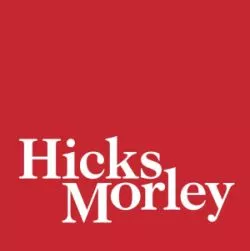It has now been seven months since Bill 148, the Fair Workplaces, Better Jobs Act, 2017, was enacted and cases are beginning to emerge which interpret the new provisions of the Employment Standards Act, 2000 (ESA). In this Minimum Standards Monitor, we review some decisions of particular interest to employers which consider the new personal emergency leave (PEL) requirements, the equal pay for equal work provisions and the increased minimum wage.
Types of Case Being Rendered to Date
Complaints filed with the Ministry of Labour are investigated by Employment Standards Officers (ESOs) and their decisions are not reported. It is only where an ESO's decision is appealed to the Ontario Labour Relations Board (OLRB) that a reported decision is issued. We anticipate that with respect to non-union employees, it will be some time before we see many decisions arising from litigation around the new provisions. However, we are aware of three recent unreported ESO decisions, which we discuss below.
For unionized employees, issues under the ESA are resolved through the grievance procedure and we have seen some activity in the arbitral case law, also discussed below.
Personal Emergency Leave
In United Steel Workers, Local 2010 and Bristol Machine Works, which was summarized in our FTR Now of May 23, 2018 Update on Personal Emergency Leave in the Municipal Sector, Arbitrator Mitchnick found that the employer's short term disability benefit plan was a greater right or benefit than the ESA PEL provisions that applied to personal illness. The short term disability plan had a 7 day waiting period and a doctor's note was required to qualify for benefits. As noted in our FTR Now, Arbitrator Mitchnick's approach in the Bristol Machine Works case is unique in its parsing out one of the PEL entitlements for the greater right or benefit analysis.
In a more recent case, Carillion Services Inc. and Labourers' International Union of North America, Local 183, Arbitrator Rogers found that the provision of 3 paid floater days in a collective agreement did not constitute a greater right or benefit than the 2 paid PEL days under the ESA. Arbitrator Rogers' analysis is consistent with the case law that developed prior to the change to the entitlement to include 2 paid days of PEL.
The collective agreement provided for 3 paid floater days in a 12 month period running from July 1 to June 30. The days could be used by employees with advance permission. The collective agreement also provided that the floater days would be applied by the employer for any days when an employee fails to report to work for a justified absence.
The employer argued that the 3 paid floater holidays were a "like benefit" to PEL because they applied when employees encountered "unexpected circumstances." Arbitrator Rogers disagreed and concluded that the floater days were too dissimilar to PEL days: the floater days were included in the holiday section of the collective agreement and "the employer had no right "to unilaterally change the meaning or intent of a collective agreement provision ... to transform a paid holiday into an emergency leave.""
Arbitrator Rogers referred to some of the arbitration decisions where the greater right or benefit was considered with respect to PEL days and "floater days" in particular. He also referred to the Bristol Works decision but distinguished it on the basis that Arbitrator Mitchnick found the income protection plan provided by the collective agreement was "manifestly better" than the minimum standards. Regarding the floater days, Arbitrator Rogers concluded that there was no greater right or benefit for a number of reasons:
- the floater days did not directly relate to PEL and it was an "apples to oranges" comparison
- the PEL entitlement renewed each January while the floaters did not renew until July 1st and employees were not required to save their floaters in case they needed them for PEL in January – the floaters could be used up before January 1st each year
- the collective agreement did not restrict the use of floaters to reasons determined by the employer – the employee had the discretion to determine how a floater day would be used.
The grievances in the Carillion case were allowed and the grievors were entitled to the paid PEL days for the absences in question.
Equal Pay for Equal Work
Three unreported decisions rendered by an ESO on July 4, 2018 considered the amended equal pay for equal work provisions under the ESA (s. 42.1) and concluded there was no violation by the employer. All three decisions involved the same employer, a teaching institute which provides English as a Second Language (ESL) and university preparation courses, among other things.
At issue were the hourly rates provided to ESL teachers (which increased from $17.00 to $21.50 per hour in February 2017) as compared to the hourly rates provided to teachers involved in the university preparation courses (UPC) and guaranteed program courses (GPC) (which increased from $23.00 to $24.00 per hour in February 2017). The claimants argued that there was a wage gap between the ESL teachers and the UPC/GPC teachers, despite the same responsibilities and similar working conditions.
The equal pay for equal work provision regarding employment status came into force on April 1, 2018. In the first two decisions, the ESO considered the wage rates provided to the claimants for the months of April and May 2018 and accepted the employer's evidence that there were specific factors "to justify the differences in the rate of pay between the ESL teachers and teachers in the UPC and GPC programs. Factors such as effort, different level of knowledge, educational training, experiences that is [sic] required to teach UPC and GPC, and that the UPC and GPC courses are part of the Ontario curriculum." The difference in pay was based on factors other than sex or employment status and the equal pay for equal work provision did not apply.
The third claim was dismissed as the claimant had left her employment prior to the coming into force of the amended equal pay for equal work provision on April 1, 2018.
Minimum Wage
In Dresden Industrial v Sheet Metal Workers International Association, Local 540, the employer was required to increase the wages for entry level positions to comply with the new minimum wage. Under the collective agreement, new hires received 85% of the full Tier 2 rate for the first 3 months of employment. They received a raise after 3 months, to 90% of the full Tier 2 rate. After 6 months, they received a further raise to 100% of the full Tier 2 rate. The Company applied the mandatory minimum wage of $14.00 per hour to new hires. It did not adjust the rate at 3 months, or at 6 months.
The union argued that the Company was required to increase the Tier 2 rate in order to maintain the 85%, 90% and 100% difference between the new hire, 3 month and 6 month rates in order to maintain the structure of the wage rate.
The collective agreement also contained language anticipating that there may be legislative changes that affect provisions of the collective agreement. These provisions were described in the award as follows:
Section 25.01 recognizes that legislative change may "cancel or require modification" of some provision of the collective agreement and that such provision will become "inoperative". Where that is required, article 25.02 recognizes that no other provision of the agreement will be invalidated as a result.
Arbitrator Newman dismissed the grievances and concluded that "[t]he difference in wage rates enjoyed by the full Tier 2 employees over that of their newly hired colleagues is a matter that is not protected by the change in the minimum wage. That is a matter for bargaining."
In a second case, International Brotherhood of Electrical Workers, Local 105 v. E.S. Fox Ltd., Arbitrator Nyman considered whether the employers were required to increase the base rate paid to First Term Apprentices and Pre-Apprentices under the Principal Agreement between the Electrical Trade Bargaining Agency and the IBEW and the IBEW Construction Council of Ontario.
Under the Principal Agreement, each job classification is assigned a "wage package." The wage package is broken down into various components including a "Base Rate." The wage package for the two classifications in question were $25.80 for the First Term Apprentices with $13.30 of that amount allocated to the Base Rate and $18.83 per hour for the Pre-Apprentices with $12.29 allocated to the Base Rate. The difference between the Base Rate and the total wage package ($12.50 and $6.50 in this case) is allocated to various "funds" that are administered by the union such as a Health and Welfare fund, a union administration fund, a Taxable Union Fund (Retirement Incentive Plan), a Training Fund and a Market Recovery Fund.
The allocation of the wage package to the various funds was within the discretion of the union, not the employer. The evidence was that the union would often re-allocate the wage package to different funds. When such re-allocations occur, the employer's bargaining agency, the Electrical Trace Bargaining Agency, signs off on the changes. The allocation described above was in place at the time the minimum wage increased. The allocation was signed off in April 2017 by the union and the employer's bargaining agency. The union argued that the employer was responsible for ensuring that the "Base Rate" was increased to meet the minimum wage. Arbitrator Nyman rejected that argument and found:
- It is true that once the IBEW authorizes an apportionment of the wage package amongst the funds and the base rate, that apportionment is signed off by the ECAH and the IBEW. On the facts of this case however, that is no impediment to the IBEW altering the apportionment, if and when it sees necessary. Given this, there is no principled reason why the IBEW, in the face of a base rate that it set that subsequently becomes less than minimum wage, can refuse to reapportion the wage package and compel the Employers' to effectively pay a higher total wage package to bring the base rate into compliance with the ESA. Under the terms of the Principal Agreement, where the IBEW has complete discretion over the timing and amount of any allocation of the total wage package, the risk of a rise in the minimum wage does not shift between the ECAH and the IBEW depending on whether the IBEW wishes to reapportion the wage package or not.
Both the Dresden Industrial and the IBEW, Local 105 cases are good examples of arbitrators respecting the complete bargain between the parties. Each case should be decided based on a holistic review of all of the terms of the collective agreement.
We will continue to keep you updated on new Bill 148 cases as they are released.
The content of this article is intended to provide a general guide to the subject matter. Specialist advice should be sought about your specific circumstances.

